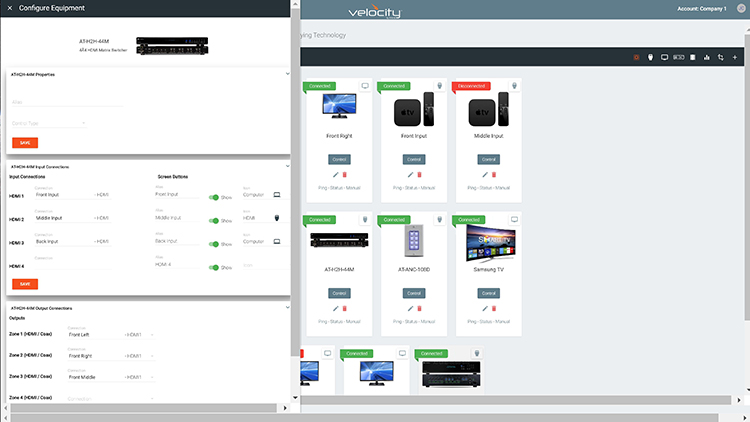The convergence of AV and IT technologies is commonly associated with the migration of video and audio from circuit-based signal distribution to IP networks. However, there are many new opportunities for control and management of AV systems over IP and the cloud, with several potential advantages over existing AV system control platforms.
AV control systems traditionally require significant programming time and investment in control equipment. Over time, these systems usually need to be expanded to meet evolving facility needs, including equipment upgrades and replacement. Exchanging a single piece of equipment, such as a projector, can require bringing in a specialized programmer. This results in additional time and expense, for which the in-house technology manager is responsible.
Then there is the concern of availability and up-time. On a university or corporate campus, failure in a control processor can disable AV presentation in one or more rooms, resulting in user frustration and possible cancellation of a class session, meeting, or event. However, designing for system redundancy is another expense-headache for the technology manager, requiring highly customized solutions with A-B switches, backup processors, and specialized programming. This is simply impractical for most budgets.
A Fresh Viewpoint
Most AV control systems to date live and die by the control processor. This processor includes fixed device control capacity for IP, RS-232, IR, contact closure, and more. As systems grow, so do the number of processors and device connectors. This can make the entire architecture complicated and expensive to design and program. Similarly, expanding an AV control installation will require significant investment by the technology manager.
Atlona’s engineering team recently gathered to address the challenges and limitations associated with AV control today. The team envisioned what the optimal control system would be to address these challenges for the technology manager, and how IP and the cloud could be leveraged to make it easy to deliver a unified, easily scalable control architecture, from individual meeting rooms all the way to large-scale campus and enterprise-wide systems.
Three Spokes in the Wheel
In seeking a new approach to AV control, moving to a cloud and premise-based technology platform with specific features aimed at addressing today’s challenges is critical to unleashing new efficiencies. We envision three distinct elements to bring this vision together.
First, a cloud-based service and centralized resource for integrators to create and manage their AV control projects by client, client sites, and specific locations such as rooms. An integrator accesses the cloud service through a standard web browser from any location worldwide. AV control system configuration is fast and highly intuitive with the familiar interactions, flow, and visual elements of a web or mobile application. Furthermore, configurations can easily be duplicated across devices, rooms, and sites, simplifying deployment throughout a facility.
The second element is a software-based IP control processor (or gateway) that resides on-site with the client’s AV systems. Instead of the expense and maintenance of traditional control processors, it is configured and managed remotely through the cloud service. Atlona’s answer to this is the Velocity™ AV control platform, which includes the gateway as a server appliance that can interface with up to 500 devices. For enterprise-wide scalability, a software license of the gateway is also available for hosting on IT server infrastructure, with the capability to serve up to 5,000 devices.
The benefits of a software-based AV gateway includes an IP-based system architecture that allows full redundancy. Compared to legacy control architecture, the IP approach supports two operational gateways, one serving as the primary and the other as a backup. This keeps AV control running continuously throughout a facility or enterprise, preventing downtime in any room.
The third element would comprise intuitive, web-based graphical user interfaces accessible through touch panels as well as end user-furnished devices including tablets, smartphones, and PCs. With GUIs automatically generated by the cloud service during system configuration, they are easily accessible to the touch panels or BYOD user devices through the on-premises gateway.
More Pieces to the Puzzle
Looking past these three distinct elements, leveraging IP and the cloud also will help technology managers more effectively visualize overall performance. This includes the need for centralized monitoring, notifications, and analytics across multiple clients and site installations. On the analytics front, deeper insight into which rooms and equipment are most frequently accessed will help integrators and technology managers make informed decisions about when, where, and how to expand. This is something that to date has lacked in AV control platforms, and will provide long-term value for those overseeing and maintaining the system.
David Shamir is the director of Product Management at Atlona.











